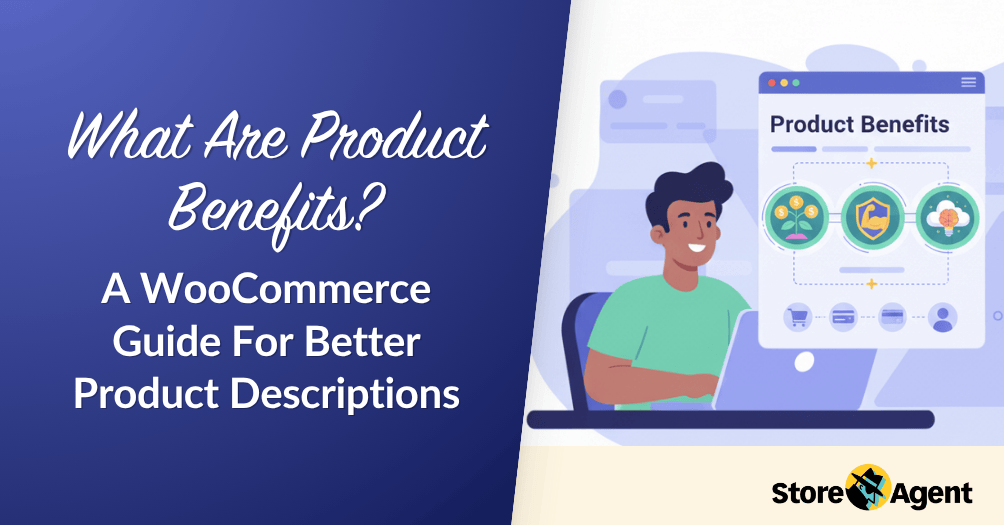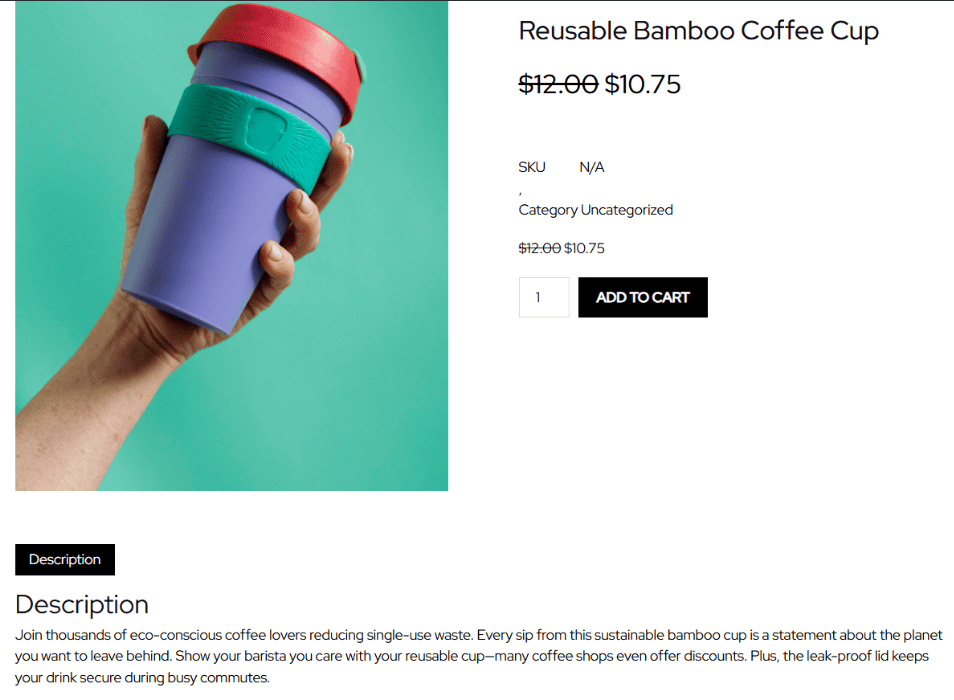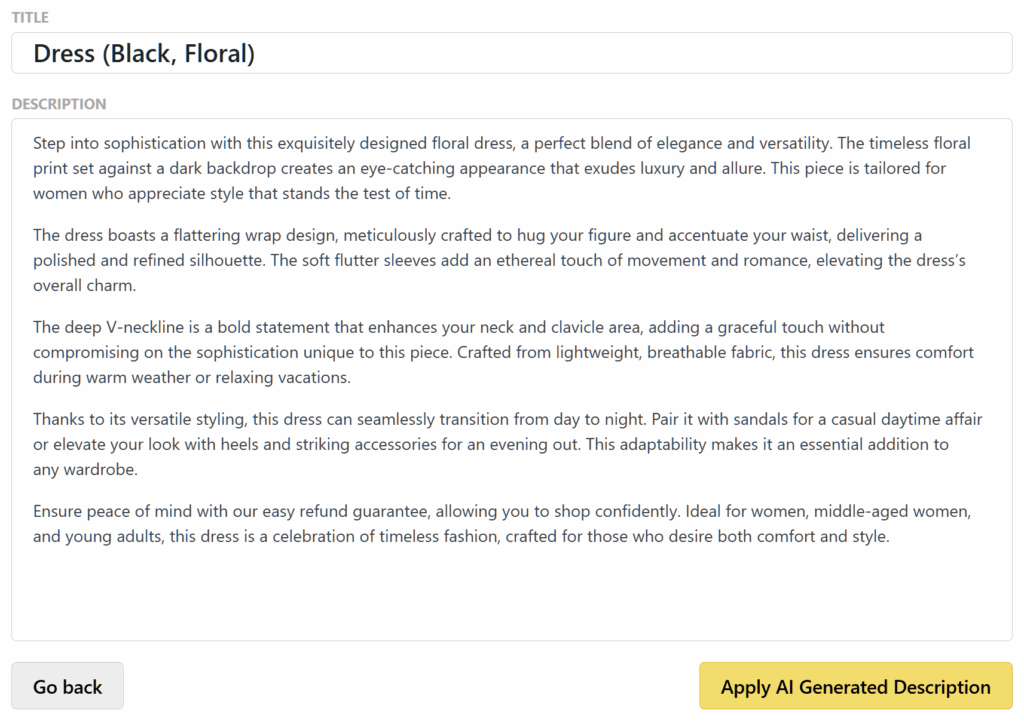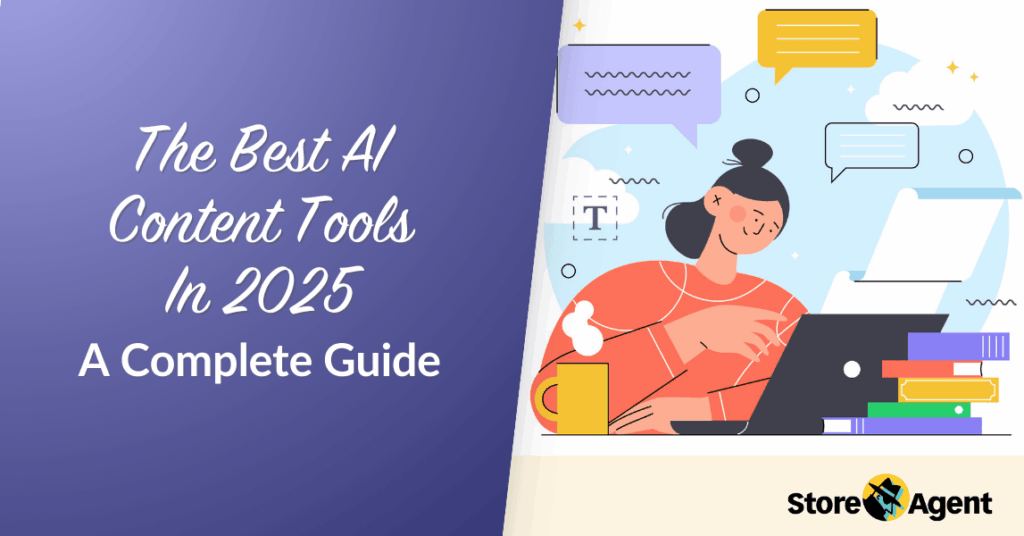
What are product benefits? Product benefits explain how a product improves a customer’s life. Unlike features that describe what a product IS, benefits show what it DOES for the customer. Benefits answer “What’s in it for me?”
Research shows that accurate and well-written product descriptions can increase conversion rates by up to 78%. However, most WooCommerce stores still list features like “stainless steel” or “1000mAh battery” instead of benefits.
In this guide, you’ll learn how to identify and write product benefits. Additionally, we’ll show you real examples from successful brands. By the end, you’ll know exactly how to turn boring features into compelling benefits.
Table Of Contents
- What Are Product Benefits?
- Product Features Vs Product Benefits: Key Differences
- 3 Types Of Product Benefits
- How To Identify Product Benefits For Your Products
- How To Write Product Benefits That Convert
- Best Practices & Common Mistakes When Writing Product Benefits
- Quick Reference: Features Vs Benefits
- Write Product Benefits Faster With AI
- Start Writing Better Product Benefits Today
- Frequently Asked Questions
What Are Product Benefits?
Product benefits are the positive outcomes customers experience from using a product. They describe practical improvements, emotional satisfaction, or social advantages that result from product features. Understanding what are product benefits is essential for writing descriptions that convert.
Features tell. Benefits sell. A feature is “waterproof fabric.” The benefit is “your belongings stay dry during unexpected rainstorms.” One states a fact. The other solves a problem.
Customers make emotional buying decisions first. Then, they justify those decisions with logic afterward. Therefore, understanding how to write benefits directly impacts your sales and conversion rates.
Product Features Vs Product Benefits: Key Differences
Here’s how features and benefits differ:
| Feature | Benefit |
|---|---|
| Stainless steel water bottle | Keeps drinks cold for 24 hours during hiking trips |
| 100% organic cotton sheets | Sleep comfortably without skin irritation or allergies |
| Noise-canceling headphones | Focus deeply in noisy coffee shops or open offices |
| Waterproof jacket | Stay dry during unexpected rainstorms on commutes |
Notice how benefits connect features to real-life situations. Features provide the specifications. Benefits show customers how their lives improve.
3 Types Of Product Benefits
Understanding the three types of product benefits helps you write more compelling product descriptions.
1. Functional benefits

Functional benefits are practical advantages that solve specific problems. These are measurable, tangible outcomes that customers can verify. Moreover, functional benefits often include numbers or time savings.
For instance, a hybrid car engine saves $800 per year on fuel costs. Similarly, a quick-heating oven cooks dinner in half the usual time. A water-resistant jacket keeps you dry during unexpected rain.
For WooCommerce stores, the same principle applies. For example, a yoga mat with a non-slip surface prevents injuries during workouts. In this case, the functional benefit is injury prevention through better grip.
2. Emotional benefits

Emotional benefits describe how products make customers FEEL. These include peace of mind, confidence, happiness, or security. Interestingly, emotional benefits often drive purchasing decisions more than functional ones.
Consider a home security system. The functional benefit is detecting intruders. However, the emotional benefit is sleeping better knowing your family is protected.
Similarly, a designer handbag helps you feel confident at important meetings. Likewise, meal kit delivery reduces dinner-time stress for busy families.
3. Social benefits

Social benefits affect how others perceive the customer. These include status, belonging, and recognition within a community. In recent years, social benefits have become increasingly important for younger shoppers.
For instance, eco-friendly products let customers show environmental responsibility. Premium brand clothing signals success and refined taste. Meanwhile, the latest tech gadgets position owners as innovative early adopters.
For WooCommerce stores, social benefits work well in copy. For example: “Join thousands of sustainable shoppers choosing plastic-free packaging.” This appeals to customers who want to be part of an environmentally conscious community.
How To Identify Product Benefits For Your Products
Finding the right benefits for your products requires a systematic approach. Most store owners struggle because they’re too close to their products. However, a simple framework makes this process easier.
1. The feature-to-benefit conversion framework

Start by listing all your product features. Include materials, size, function, and specifications. Write down everything technical about the product.
Next, ask “So what?” for each feature. Keep asking until you reach an emotional outcome. This technique forces you to dig deeper than surface-level descriptions.
When you ask “What are product benefits?” for each feature, you discover the true value customers receive.
Here’s an example:
- Feature: Waterproof fabric
- So what? Protects belongings from water
- So what? Electronics stay safe in rain
- Benefit: Never worry about ruined phones during commutes
The final benefit connects to a real customer pain point. It’s specific, emotional, and immediately valuable.
2. Use customer research

Your customers already tell you what benefits matter most. Read five-star reviews on your products. Look for phrases like “I love that…” or “This helps me…”
For example, a real customer review might say “This tote fits everything without being bulky.”
Turn that into a benefit: “Carry all daily essentials while maintaining a sleek, professional look.” The customer gave you the benefit language directly.
Survey your existing customers too. Ask what problem your product solves for them. Lastly, ask how it has improved their daily routine.
3. Analyze your target market

Different customer segments care about different benefits. Understanding your product target market helps you emphasize the right benefits. Busy professionals value time savings, while parents prioritize safety.
Check competitor reviews as well. See what customers value most about similar products. Identify unmet needs you can address better. This research reveals gaps in the market.
Finally, match benefits to actual pain points your customers face. Generic benefits like “high quality” mean nothing. Specific benefits like “lasts three times longer than standard options” solve real problems.
How To Write Product Benefits That Convert
Writing effective benefits requires more than just identifying them. The way you present benefits dramatically affects conversion rates. Therefore, use a proven formula that works consistently.
The benefit-writing formula
The best benefit descriptions follow this structure:
Feature + Specific Benefit + Proof = Conversion
This formula works because it provides everything a customer needs to make a decision.
Before (Feature-only): “Premium cotton sheets, 400 thread count.”
After (Benefit-driven): “Sleep cooler and more comfortably with 400-thread-count organic cotton sheets. Customers report falling asleep 20% faster.”
Notice how the after version includes the feature, explains the specific benefit, and adds social proof. All three elements work together to convince shoppers.
Use this template:
“[Action verb] + [desired outcome] + with [product feature]. [Social proof or data point].”
For example: “Stay focused longer with noise-canceling technology. Used by 10,000+ remote workers.”
Best Practices & Common Mistakes When Writing Product Benefits
Writing effective product benefits requires following proven techniques. These practices help your benefits convert better and rank higher in search results. Here’s what works best for WooCommerce stores:
Use specific numbers, not vague claims:
- ❌ Wrong: “Saves time”
- ✅ Right: “Saves 45 minutes per week”
- Why it works: Numbers make benefits concrete and believable
Lead with outcomes, not features:
- ❌ Wrong: “Made with stainless steel for durability”
- ✅ Right: “Use daily for 10+ years without replacement”
- Why it works: Outcomes matter more than materials
Keep sentences short for mobile:
- Aim for under 20 words per sentence
- Short text scans easily on small screens
- Most WooCommerce shoppers browse on mobile devices

For more guidance, check our complete guide on SEO product descriptions for WooCommerce stores.
Quick Reference: Features Vs Benefits
Use this table when writing your own product descriptions:
| Product Type | Feature | Benefit |
|---|---|---|
| Yoga Mat | Non-slip surface | Practice safely without sliding during difficult poses |
| Dog Food | 32% protein content | Build strong muscles for active, healthy dogs |
| Water Bottle | Double-wall insulation | Enjoy ice-cold drinks for 24 hours on long hikes |
| Wireless Earbuds | 8-hour battery life | Listen all day without charging interruptions |
| Laptop | 16GB RAM | Work smoothly with 30+ tabs open simultaneously |
| Running Shoes | Cushioned sole | Reduce joint pain during daily five-mile runs |
Each benefit connects the feature to a specific use case. Moreover, they use action words that help customers visualize using the product. This makes the benefits more concrete and believable.
Write Product Benefits Faster With AI
Writing benefit-driven descriptions for hundreds of products takes enormous time. Most store owners spend 30 minutes per product. For 200 products, that’s 100 hours of work.
Modern WooCommerce AI product description tools solve this problem efficiently. These tools analyze product features automaticallyand convert technical specifications into customer benefits. Additionally, AI can identify all three benefit types: functional, emotional, and social. This helps maintain consistency across your entire catalog while matching your brand voice.
However, always review AI output for accuracy. Check that benefits match your actual product capabilities. AI speeds up the process, but human judgment ensures quality.
Automate product benefits with StoreAgent
StoreAgent’s AI Product Description Tool generates benefit-focused copy automatically from your existing product data.

Here’s what makes it different:
You set your brand tone once, and the AI maintains it across all products. You can generate multiple versions of benefits and pick what resonates best. The tool also integrates with your existing WooCommerce catalog, pulling product data automatically. This means no copy-pasting or manual data entry.
Related Read
Discover more top-rated AI content tools that can transform your store’s marketing efficiency.

Start Writing Better Product Benefits Today
Product benefits explain what a product DOES for your customer’s life, not just what it IS. Understanding what are product benefits helps you write descriptions that actually convert browsers into buyers.
This guide covered everything you need to write compelling benefits:
- What Are Product Benefits
- 3 Types of Product Benefits
- How to Identify Product Benefits
- How to Write Product Benefits
- Write Product Benefits With AI
Start by reviewing your top 10 products today. Rewrite their descriptions using the feature-to-benefit framework. Ask “So what?” until you reach emotional outcomes. Then, track your conversion rate improvements.
Ready to automate this process? Explore StoreAgent’s plans and transform your WooCommerce store’s marketing efficiency.
Frequently Asked Questions
What is the difference between a feature and a benefit?
Features are factual attributes of a product. They describe what it IS or what it HAS. Benefits explain how those features improve the customer’s life and what it DOES.
For example, “waterproof fabric” is a feature. “Keep belongings dry during rainy commutes” is the benefit. The feature states a fact. The benefit shows practical value in a real-life situation.
How do I identify product benefits for my WooCommerce store?
Start by listing all product features. Then ask “So what?” for each feature. Keep asking until you reach an emotional outcome that matters to customers. Once you understand what are product benefits, the identification process becomes much easier.
Additionally, read customer reviews carefully. Look for phrases where buyers naturally describe benefits. Customers often use language like “I love that it helps me…” or “This solved my problem with…” These reviews reveal the benefits that actually matter.
Can AI write product benefits effectively?
Yes, modern WooCommerce AI plugins can analyze features and generate benefit-focused descriptions. Tools like StoreAgent identify technical specifications and convert them into customer-focused language automatically.
However, always review AI output for accuracy. Ensure benefits match your product’s actual capabilities. Check that the tone aligns with your brand voice. AI dramatically speeds up the process while maintaining quality with proper oversight.
Why are benefits more important than features?
Customers make purchasing decisions emotionally first. Then they justify those decisions with logic afterward. Benefits connect emotionally by showing how products improve daily life.
Features provide the logical justification customers need after making emotional decisions. Therefore, effective descriptions lead with benefits to trigger emotional response. Then they include features to support the rational justification. This sequence matches how people actually make buying decisions.
